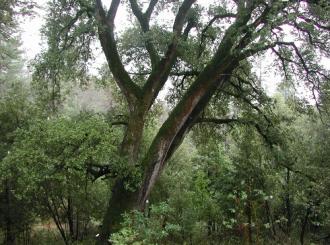INDCs: instruments to reduce emissions and adapt to climate change

Introduction
Intended Nationally Determined Contributions (INDC) set out national intentions of actions of how individual countries will tackle climate change. These indicative pledges, to be submitted ahead of the climate negotiations in Paris in December 2015, will contribute to a new international climate agreement aimed at keeping temperatures at levels safe enough to prevent dangerous global warming.
ACPC has been providing technical support to some African countries as they prepare their INDCs. In a separate Q&A, Dr Johnson Nkem, Senior Climate Adaptation Expert discusses the challenges, lessons learnt and next steps for implementation of the INDCs.
This briefing outlines the various components of INDCs and explains how these indicative pledges will contribute to the new international climate agreement.
Actions and outcomes
Individual circumstances determine the content of a country’s pledges in the INDC in the absence of a common format from the UNFCCC. However, contributions could consist of ‘actions’ or ‘outcomes’, or a combination of both. An action might relate to a new renewable energy project; an outcome may be a specific goal such as an increase in the provision of solar energy.
Collectively, INDCs aim to put the world on track towards a low-carbon, climate-resilient future, and mitigation - activities that reduce carbon emissions – will be central to these national plans. These may involve switching from fossil fuels to renewable energy sources, or programmes to preserve forests which absorb carbon dioxide from the atmosphere.
Developing countries are also invited to show how they plan to adapt to the challenges of climate change such as investing in flood tolerant crops or building defences to protect coastal areas from rising sea levels.
INDCs must be aligned with countries’ existing national plans and policies, drawing on for example National Adaptation Plans (NAP) or Nationally Appropriate Mitigation Actions (NAMA) as well as broader visions for sustainable development and poverty reduction.
Mitigation plans
While the world’s top polluting countries are under pressure to pledge substantial emissions cuts, Africa has contributed only a tiny fraction to overall greenhouse gasses. However, ambitious plans of how African countries will curb their own emissions will put more pressure on the biggest polluters to demonstrate serious commitments to tackle climate change.
Renewable energy will be vital in to Africa’s vision for a low-carbon future. Through the continent’s abundant renewable energy options - such as hydro, wind and solar – Africa has a big opportunity to bypass the dirty development of heavily industrialised countries and fast forward down a low-carbon pathway.
Focus on adaptation
INDCs are also an opportunity for Africa to show how it will respond to the hazards of climate change. Africa’s vulnerability to climate change is largely linked to its high dependence on the agricultural sector predominated by rainfed systems, employing around 75 per cent of the population. Agriculture remains a cornerstone on how Africa will adapt to climate change.
African countries can use INDCs as a platform to showcase how innovative adaptation can boost food production in a changing climate. From dry season farming to investing in drought resistant seeds, ambitious plans at national level can drive action in the international policymaking arena. Innovative ways of how Africa’s agricultural sector will adapt to climate change is an opportunity to bring agriculture into focus ahead of the Paris negotiations.
Attracting finance
Long-term benefits of adapting to climate change include increased food production and enhanced water security, reduced dependence on fossil fuels and the creation of thousands of green jobs. But there are high upfront costs in implementing these plans. For Africa, lack of finance has hindered progress. Many African countries have established policies and frameworks to demonstrate their ability to attract finance for adaptation and mitigation plans. However, much work still needs to be done here and as the challenges of climate change deepen, the funding gap grows. Countries are awaiting the decision at COP21 on whether there will be funding for the implementation of INDCs.
Knowledge and skills
Reliable climate information and data is the basis for sound adaptation and mitigation plans. But accurate climate information must first be collected and analysed. Africa needs to invest in better observation systems and infrastructures that produce robust data, as well as translating this data to meet the needs of the end-user.
Finance to build this pool of reliable, credible data - and the means to access it - will be an important part of African countries’ INDCs. So too are funds to build capacity to use this information. With the right skills and training, Africa’s vast human resource base – including policymakers, scientists and farmers – can better understand the impacts of global warming, enabling them to tackle the threats and grasp the opportunities of climate change. An effective response to climate change is driven by high quality knowledge and the capacity to put this into use.
Voluntary contributions – sound logic?
Previous attempts to secure emission reduction targets through a legally binding policy architecture, as set out in the Kyoto Protocol, had mixed results with some countries, including many of most polluting economies, refusing to be bound by the process.
The introduction of INDCs sees a shift to a ‘pledge and review’ process where these voluntary declarations of intention will be written into a universal agreement as individual commitments. According to the UNFCCC, a country’s INDCs should be “fair and ambitious, in light of its national circumstances.” However there are doubts as to whether these voluntary pledges will be ambitious enough to keep global warming within the 1.5 to 2 degree limit. In addition, it is not clear how countries will be held accountable to their pledges, nor are any clear mechanisms in place to ramp up emission reductions if INDCs fall short of the targets required to prevent catastrophic climate change. As COP21 approaches, Africa asks, will these voluntary contributions be effective enough to keep global warming at safe levels?